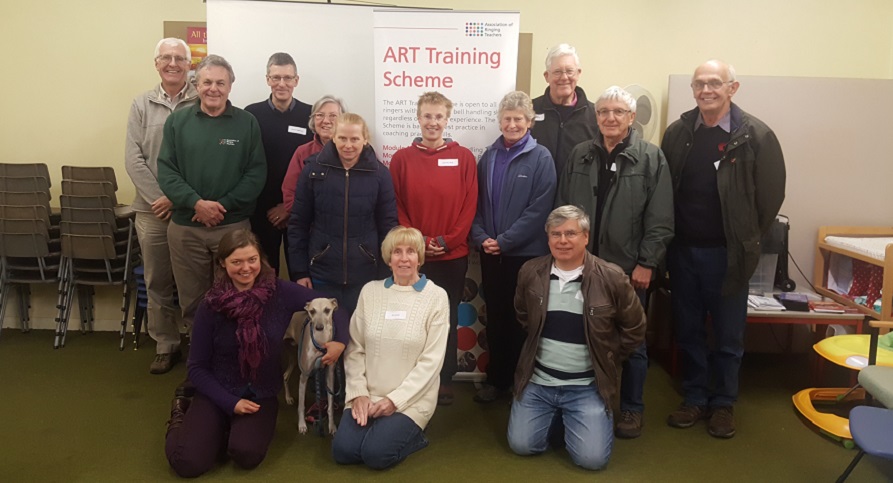M1: 13 Nov 2017 - Cheltenham
This was an enjoyable and informative one-day course that gave all participants much to think about, and a clear sense of how to become more effective teachers. Module 1 covers the teaching of bell handling, from when a recruit first enters the tower through to ringing both strokes together. Though perhaps most useful for those with some previous experience of teaching ringing, it would also be an excellent introduction for someone just starting out.
Three key principles stand behind everything we covered: good handling can be taught quickly, in days or weeks rather than months; teachers must be imaginative and flexible; and, perhaps most important of all, the fact that most learners come to ringing with no preconceptions. Their ideas about and understanding of the Exercise are largely, if not entirely, formed by the Teacher in those first few sessions. This makes it imperative that the Teacher is calm, confident, focused, and equipped to provide clear and appropriate feedback within a structured learning framework. That, of course, is where ART comes in.
The day alternated between theory sessions – with PowerPoint presentations, discussion, videos etc. – and hands-on practical sessions in the tower (on tied bells). The former were relatively formal, led from the front; the latter more relaxed, with opportunities for the participants to interact with one another and with the course leaders in smaller groups.
The first theory session began with ART background. The scheme was developed by a physiotherapist – an expert in how the body learns (and remembers) – and with close reference to current academic research in sports coaching and pedagogical theory (the theory of teaching and learning). From there we moved on to ‘Teaching a Skill’, with emphasis on the importance of intensive tuition in the early stages, accurate feedback, and the whole–part–whole approach (where a complex activity is broken down into small, simple steps that can be built up gradually). The second session, ‘Becoming a Good Teacher’, covered learning styles, tailoring tuition to suit the particular learner (old/young, confident/nervous etc.), managing mixed-ability groups, and how to give good feedback. The last session (after a very fine lunch) centred on how to correct common handling errors using prompts (verbal, visual, physical), the whole–part–whole approach again, and, again, underscoring the Teacher’s duty to find a solution that works for the particular ringer and not to allow errors to pass uncorrected: ‘practice makes permanent; only perfect practice makes perfect.’
Between the theory sessions were practical sessions in the tower, where the whole–part–whole approach was demonstrated. The Tutors introduced a variety of exercises appropriate to the various stages of the learning process, and then put us into small groups to practise them. The final practical exercise was particularly striking. A volunteer band was requested to ring some silent rounds (all the bells were tied). So we catch hold. Then we’re told to swap our hands, so the right-handed ringers ring left-handed and vice-versa. ‘How did it feel?’, we’re asked afterwards. Answer: weird, odd, scary, etc. ‘Yes – and that’s how your learners feel.’ A powerful reminder for those to whom ringing a bell has become rather like breathing.
After a final de-brief it was time to go home. Every participant left with a pack of high-quality printed resources including a Learner’s Log Book (Learning the Ropes), a Teacher’s Log Book (to track progress through the ART accreditation process), worksheets for learners, posters for the tower, and notes on recruitment and safeguarding. We also gained access to a wealth of online resources and, perhaps most important of all, the assurance that we can contact the Tutors at any time for support or assistance in their teaching.
So, all in all, a stimulating programme of talks and practicals, delivered by confident, friendly and enthusiastic leaders keen to push a refreshing and up-to-date approach to ringing and teaching. And the sandwiches were excellent.
Marianne Fisher

Course Tutor: Clare McArdle
Teaching Bell Handling
Practical advice for teachers, right from the first lesson.